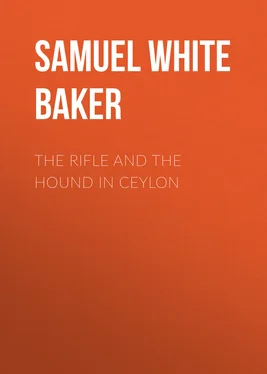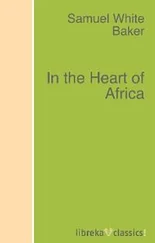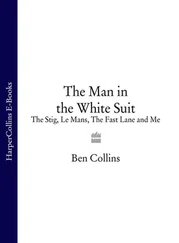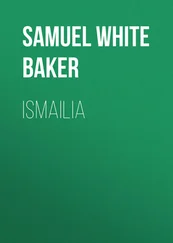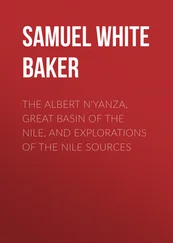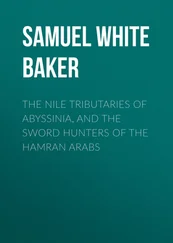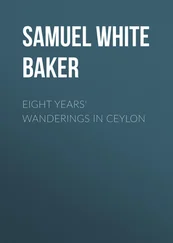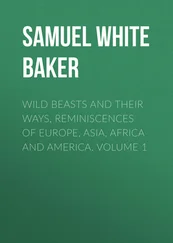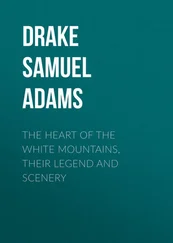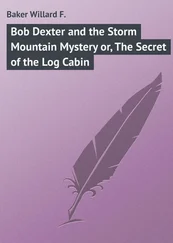Samuel White Baker - The Rifle and the Hound in Ceylon
Здесь есть возможность читать онлайн «Samuel White Baker - The Rifle and the Hound in Ceylon» — ознакомительный отрывок электронной книги совершенно бесплатно, а после прочтения отрывка купить полную версию. В некоторых случаях можно слушать аудио, скачать через торрент в формате fb2 и присутствует краткое содержание. Жанр: Путешествия и география, История, foreign_edu, foreign_antique, foreign_prose, на английском языке. Описание произведения, (предисловие) а так же отзывы посетителей доступны на портале библиотеки ЛибКат.
- Название:The Rifle and the Hound in Ceylon
- Автор:
- Жанр:
- Год:неизвестен
- ISBN:нет данных
- Рейтинг книги:3 / 5. Голосов: 1
-
Избранное:Добавить в избранное
- Отзывы:
-
Ваша оценка:
- 60
- 1
- 2
- 3
- 4
- 5
The Rifle and the Hound in Ceylon: краткое содержание, описание и аннотация
Предлагаем к чтению аннотацию, описание, краткое содержание или предисловие (зависит от того, что написал сам автор книги «The Rifle and the Hound in Ceylon»). Если вы не нашли необходимую информацию о книге — напишите в комментариях, мы постараемся отыскать её.
The Rifle and the Hound in Ceylon — читать онлайн ознакомительный отрывок
Ниже представлен текст книги, разбитый по страницам. Система сохранения места последней прочитанной страницы, позволяет с удобством читать онлайн бесплатно книгу «The Rifle and the Hound in Ceylon», без необходимости каждый раз заново искать на чём Вы остановились. Поставьте закладку, и сможете в любой момент перейти на страницу, на которой закончили чтение.
Интервал:
Закладка:
Sir Samuel White Baker
The Rifle and the Hound in Ceylon
PREFACE
Upwards of twenty years have passed since the 'Rifle and Hound in Ceylon' was published, and I have been requested to write a preface for a new edition. Although this long interval of time has been spent in a more profitable manner than simple sport, nevertheless I have added considerably to my former experience of wild animals by nine years passed in African explorations. The great improvements that have been made in rifles have, to a certain extent, modified the opinions that I expressed in the 'Rifle and Hound in Ceylon.' Breech-loaders have so entirely superseded the antiquated muzzle-loader, that the hunter of dangerous animals is possessed of an additional safeguard. At the same time I look back with satisfaction to the heavy charges of powder that were used by me thirty years ago and were then regarded as absurd, but which are now generally acknowledged by scientific gunners as the only means of insuring the desiderata of the rifle, i.e., high velocity, low trajectory, long range, penetration, and precision.
When I first began rifle-shooting thirty-seven years ago, not one man in a thousand had ever handled such a weapon. Our soldiers were then armed*(*With the exception of the Rifle Brigade) with the common old musket, and I distinctly remember a snubbing that I received as a youngster for suggesting, in the presence of military men, 'that the army should throughout be supplied with rifles.' This absurd idea proposed by a boy of seventeen who was a good shot with a weapon that was not in general use, produced such a smile of contempt upon my hearers, that the rebuke left a deep impression, and was never forgotten. A life's experience in the pursuit of heavy game has confirmed my opinion expressed in the 'Rifle and Hound' in 1854—that the best weapon for a hunter of average strength is a double rifle weighing fifteen pounds, of No. 10 calibre. This should carry a charge of ten drachms of No. 6 powder (coarse grain). In former days I used six or seven drachms of the finest grained powder with the old muzzle-loader, but it is well known that the rim of the breech-loading cartridge is liable to burst with a heavy charge of the fine grain, therefore No. 6 is best adapted for the rifle.
Although a diversity of calibres is a serious drawback to the comfort of a hunter in wild countries, it is quite impossible to avoid the difficulty, as there is no rifle that will combine the requirements for a great variety of game. As the wild goose demands B B shot and the snipe No. 8, in like manner the elephant requires the heavy bullet, and the deer is contented with the small-bore.
I have found great convenience in the following equipment for hunting every species of game in wild tropical countries.
One single-barrel rifle to carry a half-pound projectile, or a four ounce, according to strength of hunter.
Three double-barrelled No. 10 rifles, to carry ten drachms No. 6 powder.
One double-barrelled small-bore rifle, sighted most accurately for deer-shooting. Express to carry five or six drachms, but with hardened solid bullet.
Two double-barrelled No. 10 smooth-bores to carry shot or ball; the latter to be the exact size for the No. 10 rifles.
According to my experience, such a battery is irresistible.
The breech-loader has manifold advantages over the muzzle-loader in a wild country. Cartridges should always be loaded in England, and they should be packed in hermetically sealed tin cases within wooden boxes, to contain each fifty, if large bores, or one hundred of the smaller calibre.
These will be quite impervious to damp, or to the attacks of insects. The economy of ammunition will be great, as the cartridge can be drawn every evening after the day's work, instead of being fired off as with the muzzle-loader, in order that the rifle may be cleaned.
The best cartridges will never miss fire. This is an invaluable quality in the pursuit of dangerous game.
Although I advocate the express small-bore with the immense advantage of low trajectory, I am decidedly opposed to the hollow expanding bullet for heavy, thick-skinned game. I have so frequently experienced disappointment by the use of the hollow bullet that I should always adhere to the slightly hardened and solid projectile that will preserve its original shape after striking the thick hide of a large animal.
A hollow bullet fired from an express rifle will double up a deer, but it will be certain to expand upon the hard skin of elephants, rhinoceros, hippopotami, buffaloes, &c.; in which case it will lose all power of penetration. When a hollow bullet strikes a large bone, it absolutely disappears into minute particles of lead,—and of course it becomes worthless.
For many years I have been supplied with firstrate No. 10 rifles by Messrs. Reilly & Co. of Oxford Street, London, which have never become in the slightest degree deranged during the rough work of wild hunting. Mr. Reilly was most successful in the manufacture of explosive shells from my design; these were cast-iron coated with lead, and their effect was terrific.
Mr. Holland of Bond Street produced a double-barrelled rifle that carried the Snider Boxer cartridge. This was the most accurate weapon up to 300 yards, and was altogether the best rifle that I ever used; but although it possessed extraordinary precision, the hollow bullet caused the frequent loss of a wounded animal. Mr. Holland is now experimenting in the conversion of a Whitworth-barrel to a breech-loader. If this should prove successful, I should prefer the Whitworth projectile to any other for a sporting rifle in wild countries, as it would combine accuracy at both long and short ranges with extreme penetration.
The long interval that has elapsed since I was in Ceylon, has caused a great diminution in the wild animals.
The elephants are now protected by game laws, although twenty years ago a reward was offered by the Government for their destruction. The 'Rifle and Hound' can no longer be accepted as a guidebook to the sports in Ceylon; the country is changed, and in many districts the forests have been cleared, and civilization has advanced into the domains of wild beasts. The colony has been blessed with prosperity, and the gradual decrease of game is a natural consequence of extended cultivation and increased population.
In the pages of this book it will be seen that I foretold the destruction of the wild deer and other animals twenty years ago. At that time the energetic Tamby's or Moormen were possessed of guns, and had commenced a deadly warfare in the jungles, killing the wild animals as a matter of business, and making a livelihood by the sale of dried flesh, hides, and buffalo-horns. This unremitting slaughter of the game during all seasons has been most disastrous, and at length necessitated the establishment of laws for its protection.
As the elephants have decreased in Ceylon, so in like manner their number must be reduced in Africa by the continual demand for ivory. Since the 'Rifle and Hound' was written, I have had considerable experience with the African elephant.
This is a distinct species, as may be seen by a comparison with the Indian elephant in the Zoological Gardens of the Regent's Park.
In Africa, all elephants are provided with tusks; those of the females are small, averaging about twenty pounds the pair. The bull's are sometimes enormous. I have seen a pair of tusks that weighed 300 lbs., and I have met with single tusks of 160 lbs. During this year (1874) a tusk was sold in London that weighed 188 lbs. As the horns of deer vary in different localities, so the ivory is also larger and of superior quality in certain districts. This is the result of food and climate. The average of bull elephant's tusks in equatorial Africa is about 90 lbs. or 100 lbs. the pair.
Читать дальшеИнтервал:
Закладка:
Похожие книги на «The Rifle and the Hound in Ceylon»
Представляем Вашему вниманию похожие книги на «The Rifle and the Hound in Ceylon» списком для выбора. Мы отобрали схожую по названию и смыслу литературу в надежде предоставить читателям больше вариантов отыскать новые, интересные, ещё непрочитанные произведения.
Обсуждение, отзывы о книге «The Rifle and the Hound in Ceylon» и просто собственные мнения читателей. Оставьте ваши комментарии, напишите, что Вы думаете о произведении, его смысле или главных героях. Укажите что конкретно понравилось, а что нет, и почему Вы так считаете.
